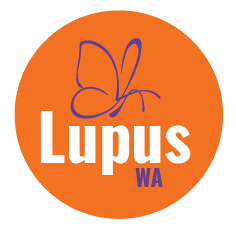Hello everyone, I’m Mary.
I’m a daughter, a sister, an
I now sit on the Board of Lupus WA and am committed to sharing lessons learned from my forty plus years of “lived experience” with lupus to support others to navigate their own lupus journeys a little easier.
*******************************************
My diagnosis and early symptoms
My lupus journey began in 1973. I was 16 years old. So lupus has been my daily companion for over four decades.
In my case, my diagnosis came about through a random stroke of luck. Initially, I had mysterious bruises and swollen and painful joints, with major swelling in the fingers, knees, feet, toes and every other body part imaginable. At
However, I just kept getting sicker and sicker and my expanding list of symptoms (chronic tiredness, nausea, sensitivity to the cold, mouth and nose ulcers, dizziness and continually getting infections were proving to be a real mystery for the doctors. Remember this was 1973 and most Doctors at hardly heard of systemic lupus erythematosus, let alone knew how to diagnose it.
I then developed a red angry looking ‘butterfly’ shaped rash on my face. (As you may know in Latin lupus means ‘angry wolf’ and it
At the time I was told that you could count the number of people with a lupus diagnosis in Western Australia on one hand. Finally getting a correct diagnosis was a relief, but it was also overwhelming and very frightening.
When I look back in the rear vision mirror, I suspect that I actually had lupus for quite some time before my actual diagnosis. I also have no doubt at all that my relatively early diagnosis and early treatment most definitely saved my kidneys. .. and also my life!
A synopsis of my lupus journey so far
In the 70’, 80’s and even 90’s lupus was still very much an unexplored frontier. There was very little known about lupus, very little research into lupus, and remember this was
My initial prognosis did not look too good at all. My parents were actually told that at best my life expectancy would be in the vicinity of 5-10 ten years as I already had major kidney (lupus nephritis) and other organ involvement. I was gutted. I remember thinking “How can this be?” I was just a teenager and I was supposed to be enjoying life. Having a chronic,
Luckily by nature, I am generally happy, outgoing, resilient and positive. I am also very determined and driven. I remember thinking “No doctors are going to give me a death sentence and I am going to prove them wrong”.
In the first couple of
Simple tasks that most people take for granted like getting out of bed, brushing my teeth, dressing, talking, walking, thinking/concentration/processing information; and sometimes even breathing were difficult. Sleep became a welcome
During this period of time (1970’s, 1980’s, 1990’s) my lupus remained challenging. No sooner was one set of symptoms resolved than there would be new symptoms, new treatments
It was exhausting being
At this time my doctors were still just focused on treating my physical symptoms as they arose and these symptoms seemed
I subsequently threw myself into researching and reading everything and anything I could get my hands on about lupus, holistic health, lupus treatments and lupus trials. I even
I gradually began evolving from that “passive”
Not surprisingly, around this time my health also started improving, my medications started to be gradually decreased and life was finally starting to look up.
The unpredictability of lupus
However, lupus can be unpredictable and just when things were consistently going well for a good 8-9 years I had a major setback. I had picked up an infection following an overseas trip which played havoc with my lupus symptoms and eventually led to being admitted into
It was 1993, yet many hospital doctors – Interns, Residents, Registrars, and even Consultants were still not overly familiar with lupus, let alone the systemic nature of lupus. Tragically for me, some fundamental treatment errors were made at the hospital that led to devastating and
My good fortune was that at the time I was working at the Distance Education
Being in
And so began my journey to undertake a complete stocktake/audit and rebuild of ME and my whole lifestyle and treatment regime.
Patient Centred/Partnership Model of care
I have subsequently drawn on lessons learned from years of “lived experience” with lupus to progressively develop an integrated patient
I have worked hard to find and assemble a multi-faceted care/maintenance team of health professionals who really know and understand the many faces of lupus. My team includes the best immunologist, the best G.P and a range of allied and
Gratefully, today I am happy and healthy and live a full and active life. Now my daily challenge is to continue to live well with lupus…and along the way to support others to make their own lupus journeys a little easier where I can.
My biggest lessons
- That as lupus patients we can help to cope (with both the physical and emotional impact of living with lupus) by being “active” versus “passive” participants in our own self-care; and
- That it is possible to live well with lupus.
“I am bigger than anything that can happen to me.
All these things, sorrow, misfortune and suffering are outside my door.
I am in the house and I have the key.”
(Charles Fletcher Lummis)
My motto for living well with lupus
“If you always do what you have always done, you will always get what you have always got.”
(Various Authors)


Hi. I have lupus and until now it’s not been a problem. I dont know anyone else with it and your story really was inspirational. Id to no more about how to heal myself and any advice or a direction you could point me in would be greatly appreciated. Thanks